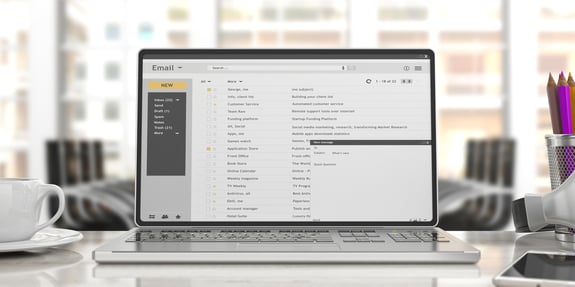10 Elements of Effective Sales Emails
 As the old saying goes, “Emails...can’t live with them, can’t live without them.” (Okay, that’s not really a saying.) Despite the multiple, premature claims that “email is dead,” my experience and data from DMR show that the growth of email is not slowing down.
As the old saying goes, “Emails...can’t live with them, can’t live without them.” (Okay, that’s not really a saying.) Despite the multiple, premature claims that “email is dead,” my experience and data from DMR show that the growth of email is not slowing down.
Email is, unquestionably, one of the most powerful tools in a salesperson or marketer’s toolkit. It is still a powerful 1:1 medium, giving the selling organization direct influence of what, where and when a message will be received.
It’s also one of the most challenging and dangerous tactics. The “inbox” is the most competitive place in the world. There’s a war between senders and recipients. As senders search for ways to get into the inbox, recipients are fighting to keep more email out (and the recipients are winning).
For more than 10 years I’ve been working with salespeople and marketers to improve the impact of their emails. I’ve also been studying those emails that work best and have the greatest impact.
Here are the 10 attributes that I’ve discovered have the greatest impact on the effectiveness of a sales email:
1. Subject Line
A strong subject line is crucial to the likelihood of your sales email doing its job well. The "job" of the subject line is to stand out in the recipient's inbox and stimulate curiosity or relevance. Be sure your subject line answers the question "Why should I read this" in a strong, clear and concise manner. Strong subject lines are typically 7 - 12 words/35-70 characters.
2. The First Two Sentences
The first two sentences will determine the make-or-break point for your email. Get to the point, deliver a strong take, and be sure your copy addresses these two questions:
- Who cares? (Specifically, should the recipient care?)
- So what? (Why should they give up time to engage with this email?)
The job of the first line of text is to get the reader to read the second, and the job of the second is to earn their attention to engage with the rest.
3. Thought-Provoking
If the message you communicate in your emails feels like everyone else's, the email will not be effective. A strong sales email challenges the status quo and creates curiosity and intrigue. Your job is to create or expand a gap that currently exists for the recipient. Thought-provoking copy sticks with the recipient. To test this in your email, ask yourself "What am I communicating in this email that will jump back into the mind of the recipient 2 days after they read this?"
4. Creates Value
You must always "solve for the customer/recipient." If your email doesn't create value by teaching, delivering an insight, providing meaningful data, or through some others means, then even if you get a response, you will be in a weak position. Here's the test: answer, "How does this email help the recipient, even if they never respond to me?"
5. Readability
While your email should be thought-provoking, you must not make your reader "think" to understand what you're communicating. Readability is relative to the recipient, but in all cases, the email must meet these criteria: it's strong, conversational, communicates a single message, and it's clear to the recipient what they should do and why they should do it.
6. Relevance
When your desired recipient receives your email, it should immediately speak to them. Your goal is to communicate in such a manner that the recipient feels as though you were eavesdropping on their conversations. The content must be focused on what's important to them and demonstrate that you understand them, rather than trying to make them understand you.
7. The Call to Action
Sales emails must communicate clearly what you want the recipient to do and why taking advantage of your offer is good for them. The offer you make should be contextual to the relationship that exists and to the place the recipient is in their journey.
8. Advance
A strong sales email provides multiple (up to 3) ways that the recipient can advance the engagement. Don't limit the options to reply/call only. Advanced options should be contextual to the nature of the relationship that exists and where the recipient is in their journey.
9. Alignment
A strong sales email aligns with everything else you and/or your company is communicating. Does your email message align with your website? How hard is it for a recipient to find relevant information on your website? Be sure all touch points align to maximize the impact of your email.
10. Length
The best length for an email is however long it takes to clearly and concisely communicate your relevant message - not one word more or one word less. That said, all things being equal, shorter emails tend to be better (though not because of length, but because of the time & care it take to create a strong, short email). Be sure the length of your email aligns with your persona and eliminate any copy that doesn't make the email message stronger.
Get More Resources Like This - Join The Sales Genius Network

.png)
.png)




